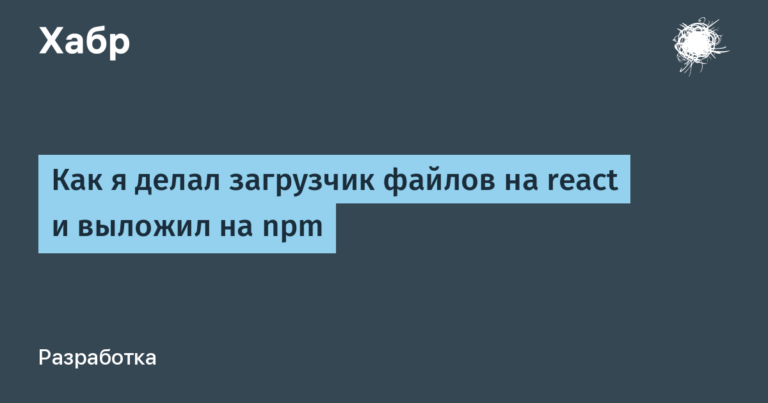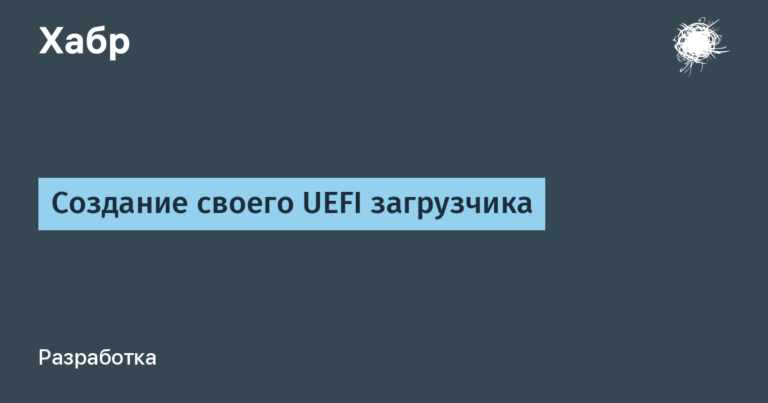Why Developers Create So Many Side Projects

Over the past two years, I have created and launched eight small Internet projects from applications to websites. Most of them failed, but together these motley projects are enough for a piece of bread. Last, Paper Website, allows you to blog using pen and paper. The idea is strange, but it also has adherents who pay for using the service every month.
A side project is usually a project that is developed as a hobby and developed along with the main work (my main job is co-founder and tech lead of a fintech startup) This is, for example, a robot based on Raspberry Pi, a task list application or a game for iOS, which brings in a few dollars. However, I have noticed that instead of developing a large project, developers are increasingly launching many small ones, just like me.
Why is that? Yes, no-code platforms, Codecademy, and tools like Stripe have made it easier than ever to write and deploy a project. But even so – why do developers lead so many side projects? In this article, I will look at the most interesting reasons.
🎰 Gambling at side project casinos

Sitting on a great golden throne in front of eagerly listening writers, George R. R. Martin spoke of a career like this:
“This is a career for players. Every time you write a book, you roll the dice again. And you don’t know if it’s going to be blown to pieces or if you’re going to be a big success.”
Martin won awards for his early novels until the fourth book, The Noise of Armageddon, almost killed his career. It wasn’t until 28 books later that he finally wrote Game of Thrones.
The creators of Internet projects are the same gamblers. The excitement of hitting the “run” button on your new idea is addictive: you just don’t know what’s going to happen next. Even a random game where a little yellow bird flies through the pipes from Super Mario can become Flappy Bird and bring in a net profit of $50,000 per day. A word game made for a girl can go viral and become Wordle.
In short: the effort invested in an Internet project often does not match the result. Realizing this randomness in practice, you simply launch more projects. For example:
Type assignments 12 startups in 12 monthsdelivered by the Dutch programmer Peter Levels, led to the fact that the lone developer launched several projects that bring $ 3,000,000 a year.
Thanks to sites like Product Hunt you can come up with something on Monday, and by Friday launch your idea to thousands of people.
Post titled “Why I launch 25 products in 25 weeks” – the most popular on the IndieHackers forum.
The authors treat their side projects like in a casino. Small but frequently launched projects have a higher chance of hitting the jackpot.
🤳 Projects as content
The Creator Economy is thriving, and it’s not just Instagram models taking selfies on the beach in Ibiza. Influencer developers are a strange new breed of creator that vloggers and streamers used to be, but now it’s a reality. Projects become both their content and monetization.

Ben Awad blurs the line between a developer and an ordinary blogger: 1.3 million subscribers watch videos of his project on YouTube, TikTok and Twitter.
“Some call it technical humor, some call it developer logs,” he told me, trying to describe the content. “I don’t know what to call it myself.” For example, one of Avada’s previous projects was a plugin VS Code for Tinderwhere users choose a pair based on other people’s code snippets.
“The Tinder plugin is really good,” he explained, “and thanks to it, some people are already getting married.
…
The problem is, I know projects are for fun. But I’m a serious programmer, and I want to make them well. So I made an Android app for Tinder One and a VS Code extension because I thought, “If I used it, it would be nice to get a push notification if I get a match. I’m not going to be in VS Code all day.”
Awad has since made videos about a series of startups he has launched. “If something good happens in a project I’m doing, great. Something good has already happened, plus I can make a YouTube video,” he said. If something bad happens to a project I’m working on, it’s unfortunate, but at least I can make a YouTube video again. And people really like it when bad things happen.”
He added: “I did all these projects just because I don’t have good ideas. So I’d rather start doing bullshit until I come up with something good… I guess my goal is to own one business that’s really big. I plant a lot of different seeds to find one big project that I enjoy.”
His latest project Voidpet: The Tamagotchi-like game for Generation Z has 130,000 users.
If you don’t want to download the builder’s app or follow someone like Avad through their videos, just hit the #buildinpublic tag on Twitter and you’ll find the developers with dozens of bio links to the various tiny projects they’ve created. Sign up for one and join a journey full of ups and downs with product launches, user acquisition, and even exiting the micro-SaaS niche for a few thousand dollars.
📉 Project crash mitigation
Has your project ever been destroyed by a revolution in Kazakhstan? I can tell you from experience that it’s pretty annoying.
Here is how it was. I once discovered that you can use emoji domains in email addresses, for example hi@👋.kz. Realizing that there are a lot of emoji .kz domains available, I figured it would be great buy 300 pieces and launch an emoji email address service. After about 1500 clients, my emoji empire collapsed when I got this tweet:

It turns out that in Kazakhstan there was a complete shutdown of the Internet, which made my project completely inaccessible.

Fortunately, after 10 days of panic, everything recovered.
Others weren’t so lucky: changes in the API, search engine algorithms, and many other factors can kill a project. Just as investors buy S&P 500 stocks instead of betting everything on Dogecoin, so developers use a portfolio of many projects to cushion failure.

Daniel Vasaglio runs an online community and teaches how to build a portfolio of small stakes.
From October 2021 his community grew to over 800 paying students. “Sometimes I jokingly say that my only business plan is to avoid having to go back to work from nine to five,” he said during a recent Zoom call.
“…That’s why I love small bets: you try something small and if you fail, it’s not that disappointing. If you try something big, failure can easily discourage a lot of people.”
He sums it up like this: “Success for me is staying in the game. In fact, you just need to avoid ending it.”

Sebastian Dubois is well aware of this condition. Last year, his article “Startup Failure Stories: How to Lose 2,000 Hours and $200,000 in 20 Months” went viral on Hacker News.
The article told about how Dubois spent two years coding for a startup that was struggling to launch. However, now Dubois is successfully developing several small projects.
“Now I develop time- and effort-constrained projects that have more advantages than disadvantages,” he emailed me. He built a community, developed two info products that sell fairly well, and even conceived a book.
“I have created a powerful flywheel between projects in my portfolio,” he said. “Nevertheless, I didn’t kill myself to get to this point. ;-)”
🌵 Fun, practice and super creativity
Developers are very creative people. Just like a musician composes or an artist paints, a developer can start a side project to unleash their creativity.

Ben Issen is a charismatic French developer of seven small projects.
“I relate to their projects how to care for a garden,” he told me via Zoom from his Paris apartment. It’s nice to do this. My favorite projects are like a tiny cactus: they are easy to plant, grow fast and require little water and care.”
Then he runs to the windowsill and grabs a huge fern: “And projects like this require a lot of attention, otherwise they will die.”
If you have a lot of ideas, creating lots of tiny self-contained projects is just fun. You can start one and then move on to the next. It’s like you’re solving a puzzle correctly every time you go from zero to multiple users. And each project is more practice, one more repetition, which increases the level of development, launch and marketing skills.
Often new projects are inspired by previous projects or build on the code of previous ones, making ideas better and easier to implement. I conducted a survey among subscribers why they develop several projects, and do not focus on one. The main reason for some is the creative process. “I’m a big fan of cross-pollination. If you mix something that is not often found together, you get something completely new, ”wrote one person.
However, not everyone avoids large projects. As another subscriber explained, small projects provide creative insights that lead to big ones: “My small projects help me learn how the big one works. My main project is the trunk of the tree, and the tiny projects are its branches.”
🔮 Conclusions for the future
What impresses me most about all these projects is that we are seeing the emergence of completely unique companies that do not usually exist. MSCHF is an extremely new example of a venture capital firm. She launches viral projects every two weeks, but the numbers suggest that she will eventually have many companies.
So why do developers develop so many side projects? Whether it’s the desire to create, learn, or get rich, it all comes down to a fundamental change in how developers look at their projects. You used to include side projects on your resume to make an IT career. Now side projects themselves can become your IT career.




